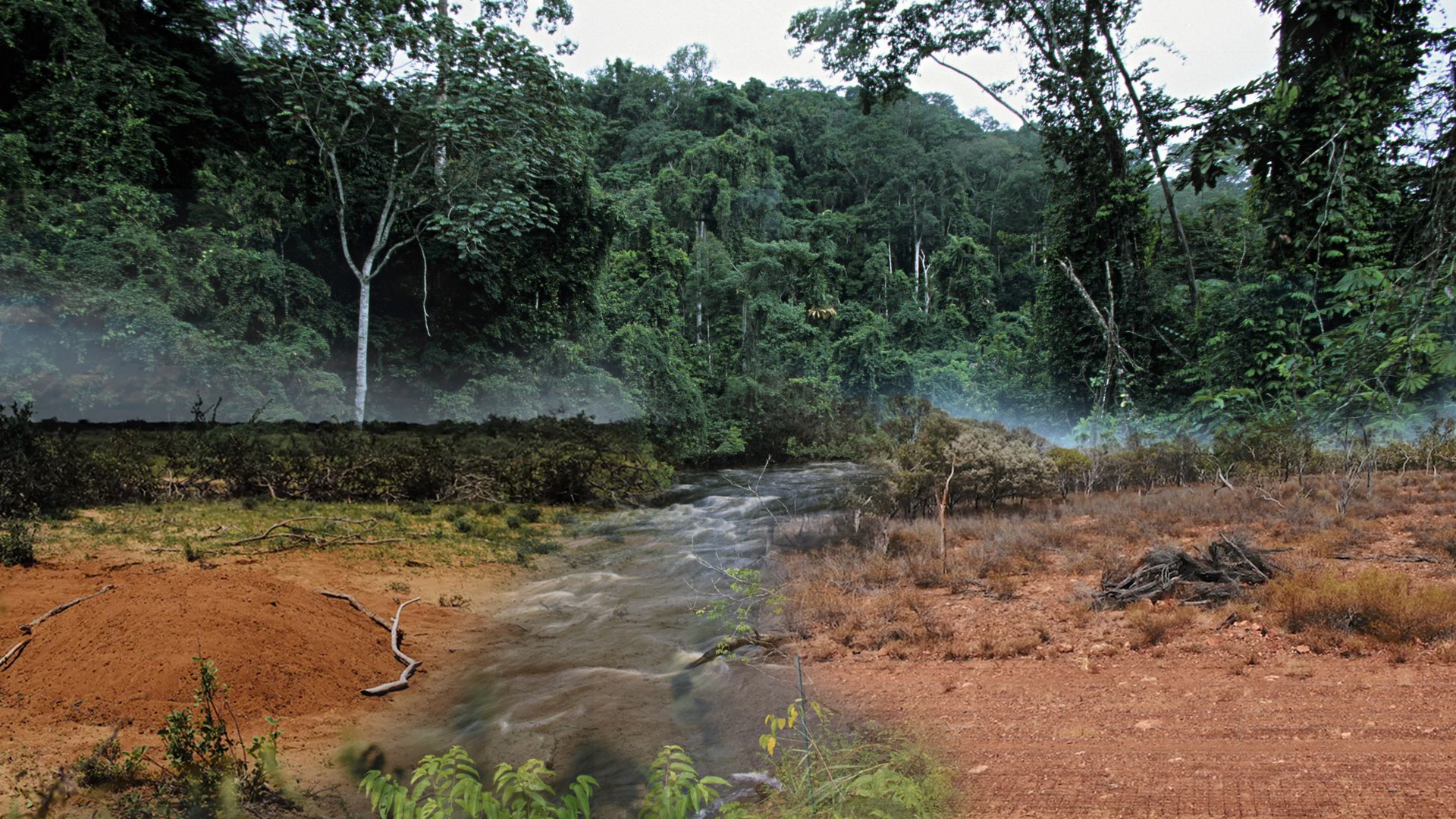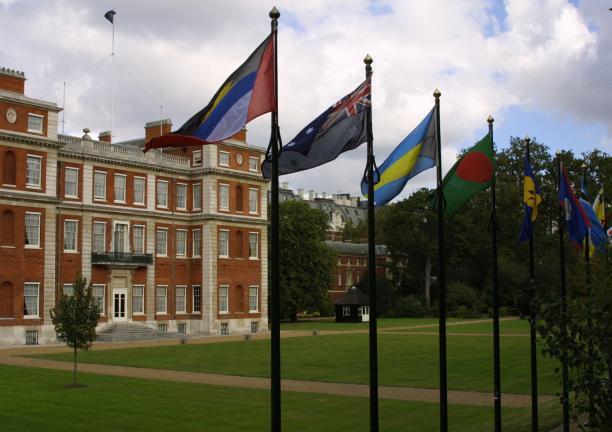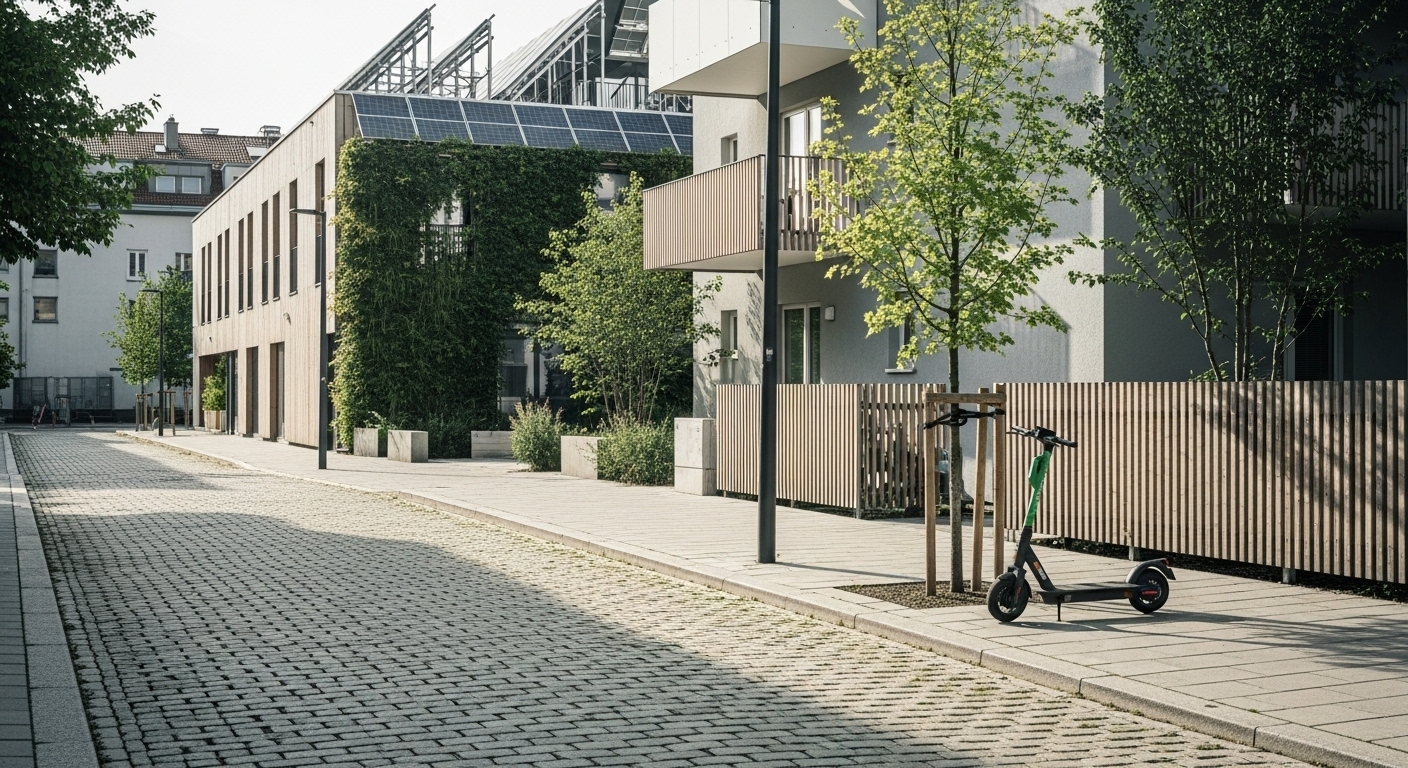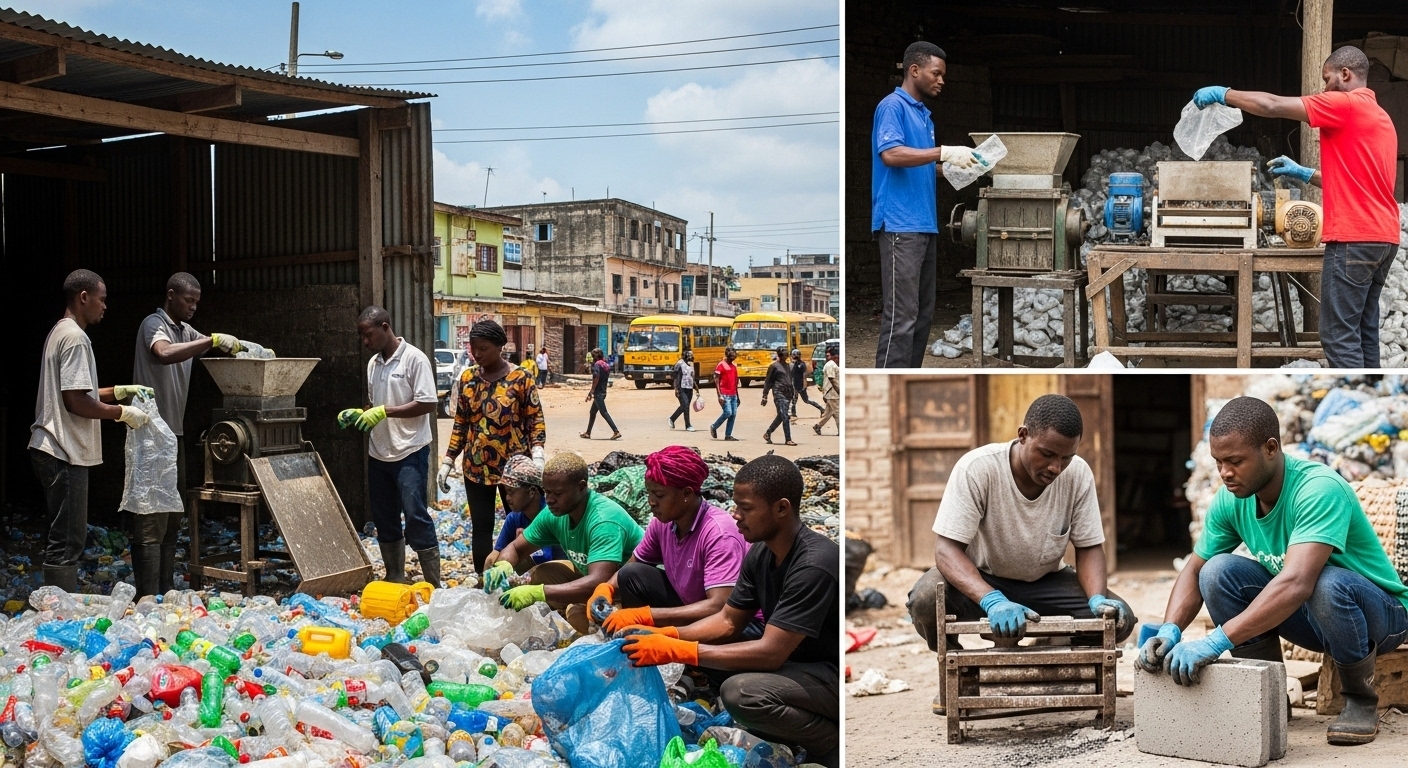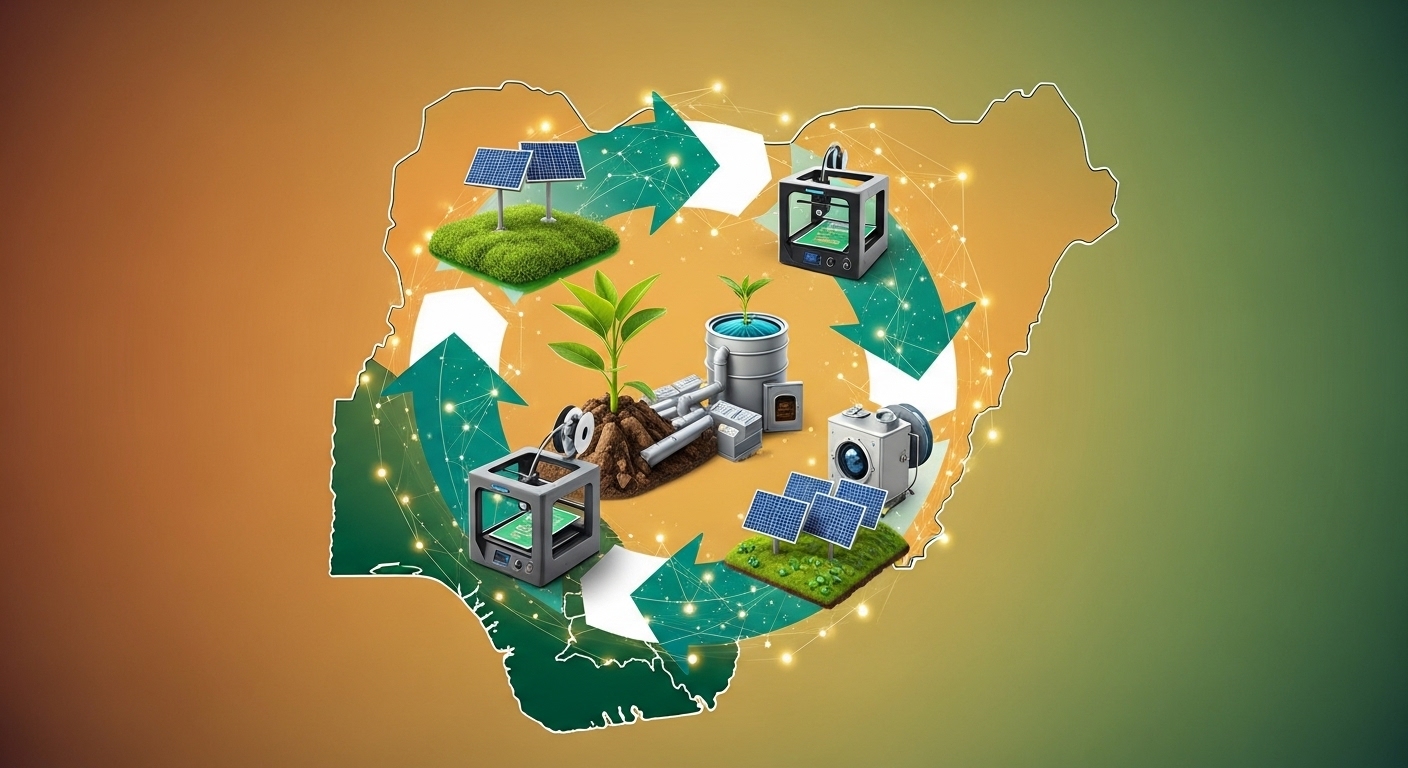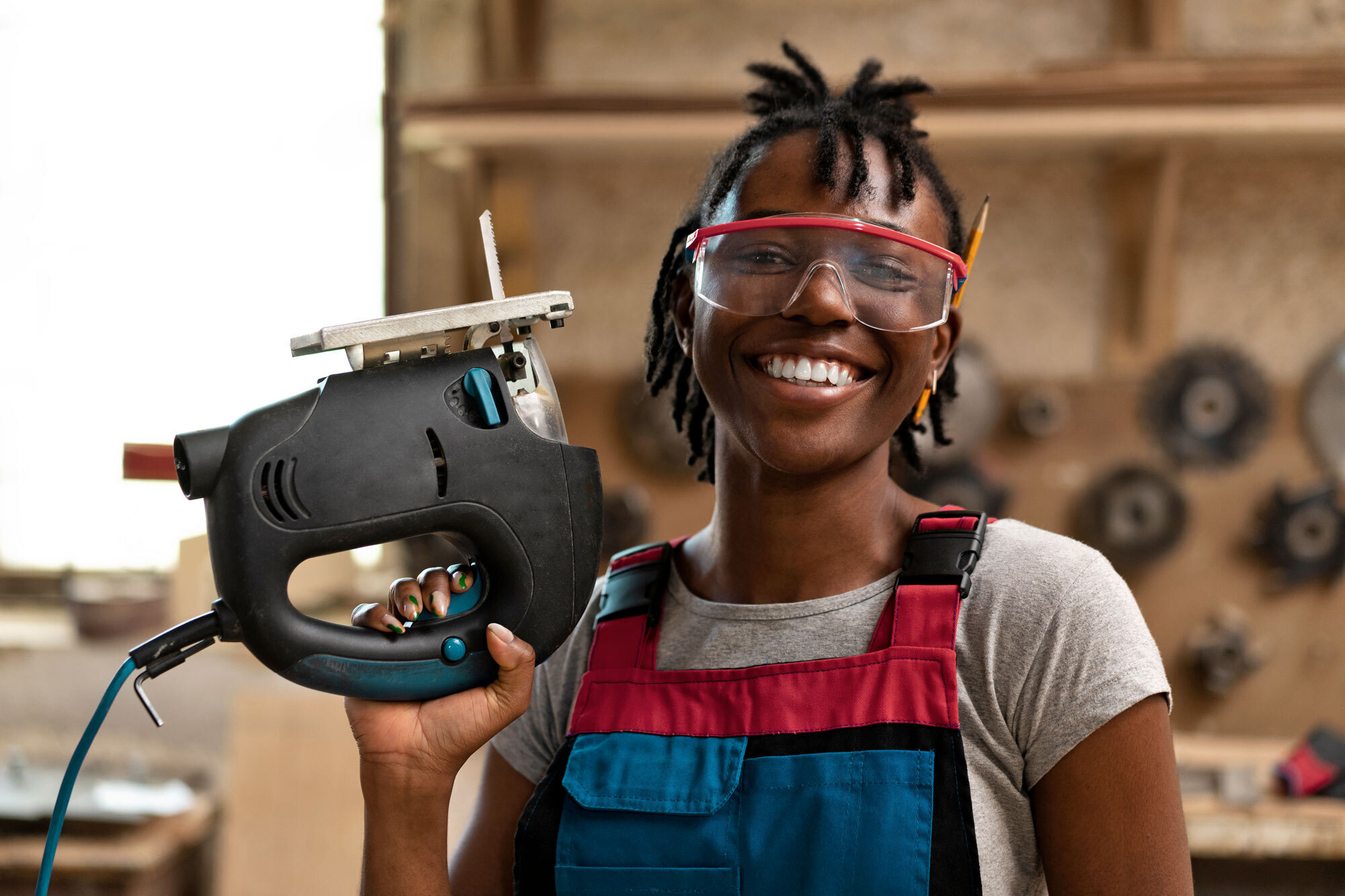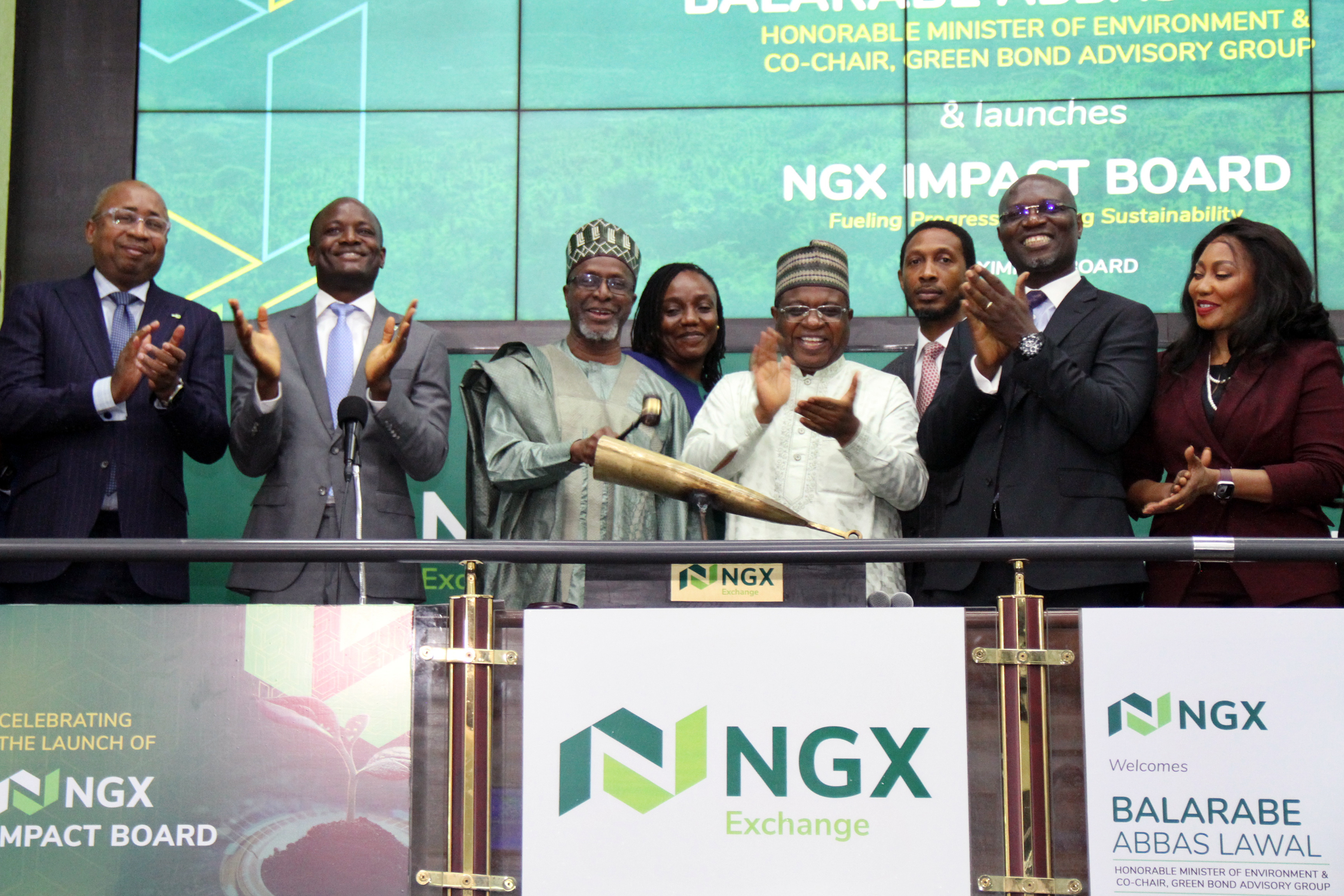Climate change is wreaking havoc across the globe, and Africa is no exception.
Yet, the continent is turning to its roots, leveraging indigenous knowledge and practices to cut carbon emissions.
These community-driven initiatives are showing promising results.
Green By Tradition, Africa Steps Forward
Africa contributes less than 5% of global greenhouse gas emissions, yet climate disruption is hitting communities hard.
From Kenya's carbon soil campaigns to Gabon's rainforest finance, indigenous solutions are rapidly advancing.
New laws and reforms are illuminating Africa's unique path, a fusion of old wisdom and innovation.
Data, Trends, and Community Insights
Across Africa, community-driven carbon reduction efforts are accelerating:
- Kenya: Auctioned 2.2 million tonnes of credits in 2023; agroforestry and soil carbon projects benefit thousands of smallholder farmers, as the 2024 law now requires benefit-sharing.
- Ghana: Earned US$4.8M for reduced deforestation in 2023, with 70% funds channelled to village projects, including healthcare and water.
- Nigeria: Targets 30 million annual credits and US$500M budget impact by 2030 under ACMI.
- Congo Basin: Potential to absorb 1.2B tons of CO2 annually; community benefit fluctuates by project design.
- Gabon: US$2B revenue in 2022 for sovereign forest credits; sets a global payment model.
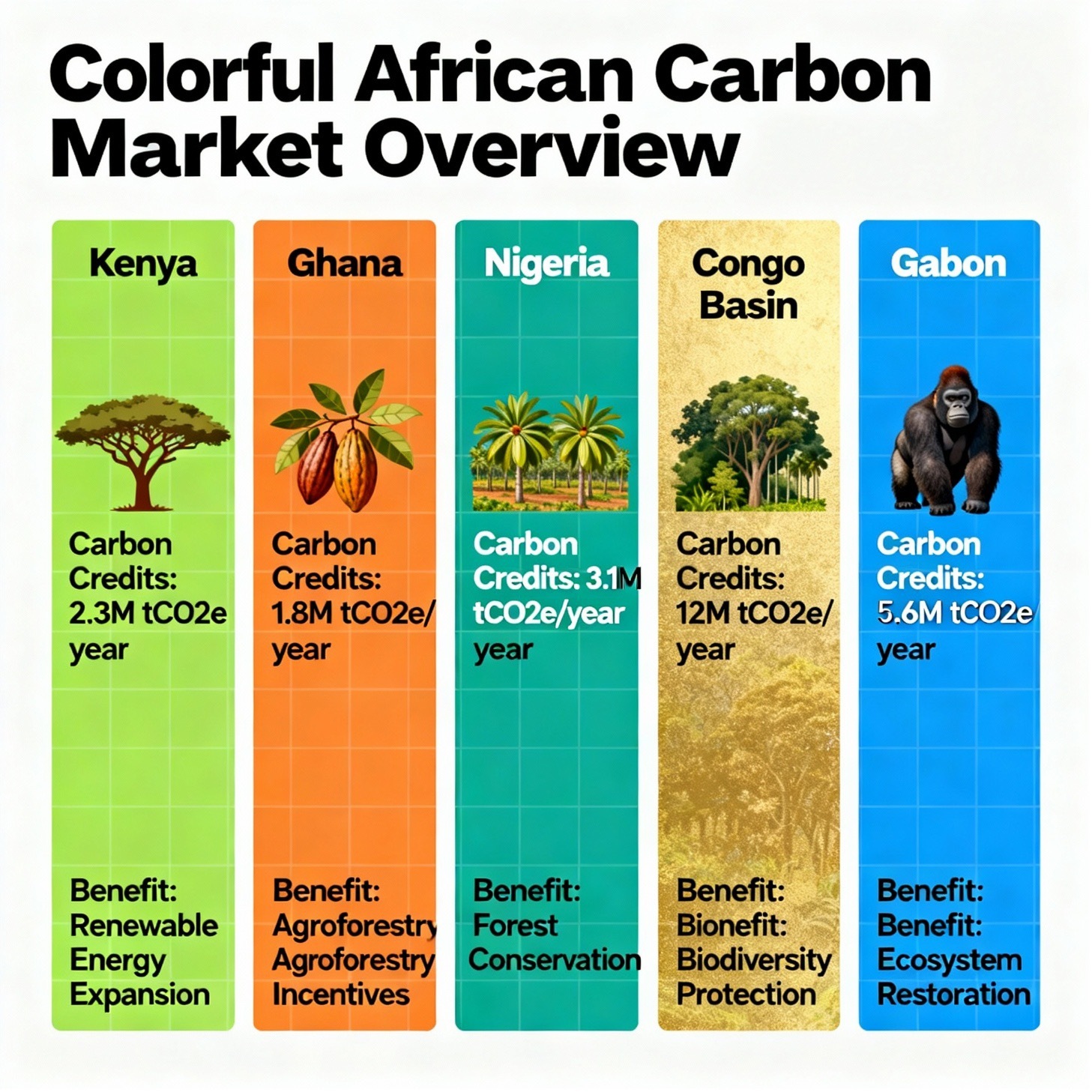
Africa's carbon market could increase by a 26.25% annual growth rate to reach $122.2 billion by 2033.
Impact and Promise
Africa's traditional and grassroots approaches, which include agroforestry, community REDD+, and forest stewardship, are shaping a fairer, greener future.
Projects are striving for equity, thereby ensuring revenue flows to villages and livelihoods.
The model promises resilience, new jobs, and a way out of social and energy poverty, if benefit-sharing and consent remain central.
Urgent Calls for Accountability & Inclusion
To ensure lasting impact, reforms must be embedded with genuine consent, rigorous monitoring, and fair, transparent benefit allocation.
Experts urge stringent national rules, robust partnerships, and genuine community control over land and financial credits.
Investing in indigenous solutions will strengthen Africa's negotiating power and promote global climate justice.
Data Infographic Table
Africa's Low Carbon Initiatives & Community Benefits (2023–2033)
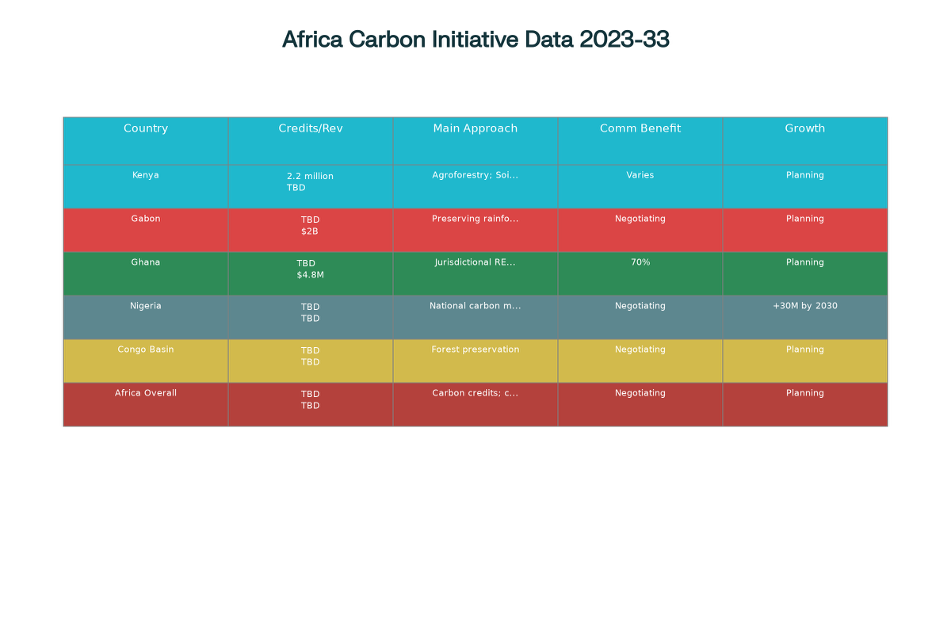
| Country | Annual Carbon Credits/Revenue | Main Approach | Community Benefit (%) | Growth Metrics |
| Kenya | 2.2M tonnes credits (2023); 5.4M clean cookstoves | Agroforestry, soil carbon, cookstoves | New law mandates sharing | Largest auction; regional leader |
| Ghana | US$4.8M, 70% to villages (2023) | Village-led REDD+ | 70% | World Bank-supported model |
| Nigeria | 30M tonnes/year (2030 goal); US$500M revenue | National market, community projects | Government targets benefits | ACMI (2030 target) |
| Gabon | US$2B (2022, sovereign credits) | Forest preservation | Negotiated, national model | Global showcase |
| Congo Basin | 1.2B tons CO2/year (potential) | Forest preservation | Varies | Major absorption capacity |
| Africa Overall | $122.2 billion market by 2033 (CAGR 26.25%) | Mixed initiatives | Ongoing reforms | Fastest-growing global region |
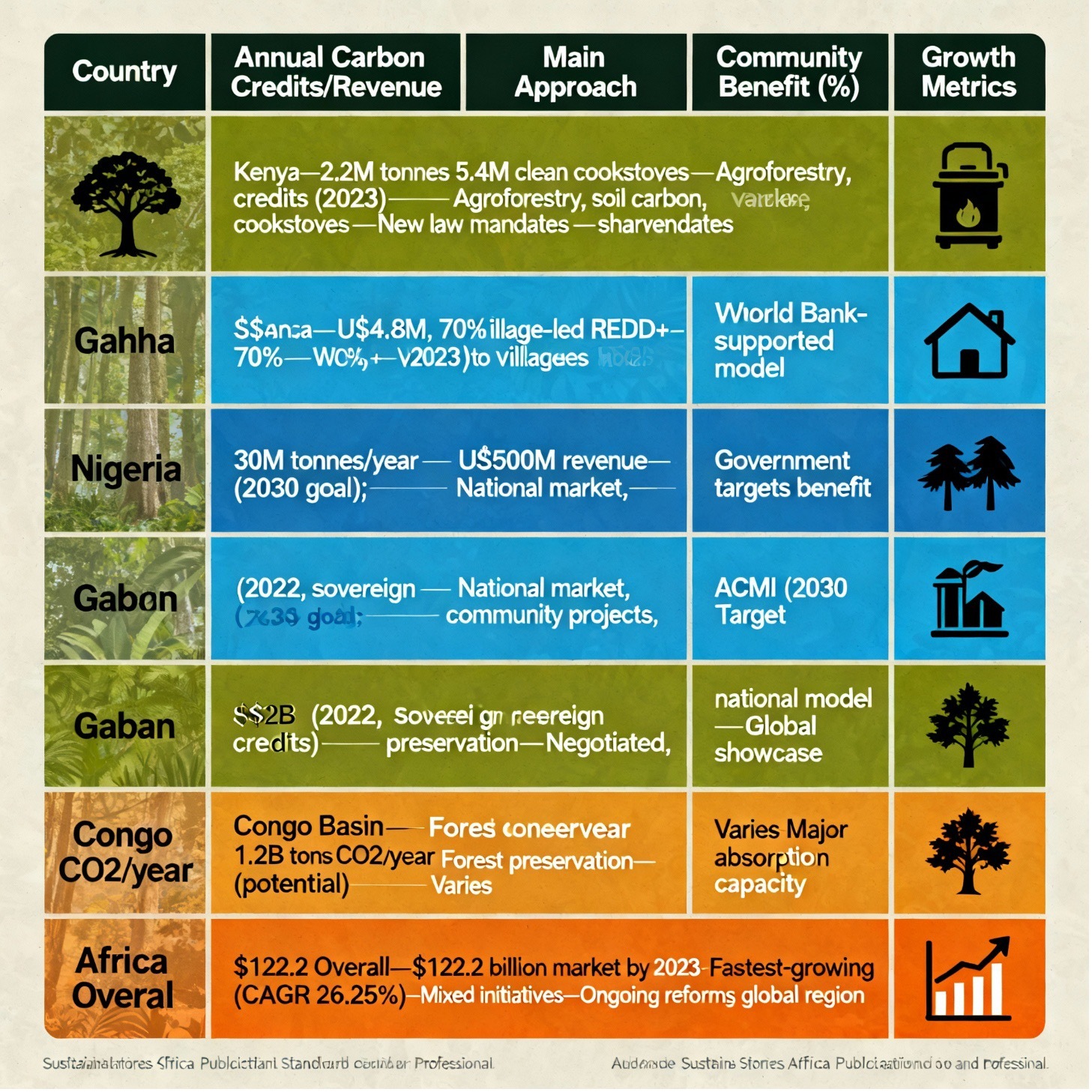
Highly accurate, colorful infographic: Africa's Low Carbon Initiatives & Community Benefits (2023–2033) by SSA standards, strictly aligned by row.

